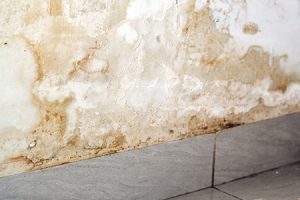Are you hunting for additional info on How to Repair and Prevent Bathroom Water Damage?

The shower room is exceptionally vulnerable for damp build-up and also potential water damage because of the regular use water in it. This write-up offers easy assessment strategies to assist discovering water damages threats.
The constant use of water in the restroom makes it incredibly prone for wet buildup and also possible water damages. By inspecting it routinely, you can reduce water related damages.
The complying with set of evaluations is simple to do as well as must be done when in every three months in order to keep your restroom in good shape and to prevent potential water damages caused by the bathtub, the shower, pipe joints and plumbing, sinks, cabinets, and the toilet
Do not overlook carrying out these evaluations as well as be extensive while doing them. Keep in mind that these simple inspections can save you a lot of money by providing early signs for water damages
Sinks as well as Cabinets
Sinks as well as cabinets are exposed to dampness as well as humidity daily and also are usually forgotten. Check frequently under the sink and on the kitchen counter above it. Fix any kind of drip in the trap as it may recommend drainpipe issues. Take a look around the sink, slow draining pipelines may indicate an obstructed drainpipe. Change sink seals if they are fractured or loosened.
Bathtub and also Shower
The shower as well as tub require unique interest as well as maintenance. Check the floor tiles as well as replace if fractured. See to it that there is no missing grout in between the ceramic tiles. Inspect and also replace cracked caulking at joints where the wall surfaces meet the flooring or the tub. Clogged drains pipes as well as pipelines problems will certainly stop the bathtub from drying and also may indicate significant issues below the bath tub. Talk to an expert immediately to stop structural damage. Take notice of discolorations or soft areas around the bath tub walls as they might suggest an internal leakage.
Plumbing
Signs for water damage are hard to find because most pipes are installed inside the wall surfaces.
Pay special focus to flooring and also walls moisture as well as stains as they might indicate an unseen plumbing issue. Examine wetness degrees in adjoining areas also.
The Toilet
The bathroom is a vulnerable water joint. Check the water lines as well as search for leaks around the commode seat, in the hose pipe, and also under the water tank. If you discover any kind of signs of wetness on the flooring around the toilet, check for leakages in the toilet rim as well as container seals.
Be aware that hanging bathroom dish antiperspirants raises the chances for blockages.
Water Damage Signs In The Bathroom To Avoid Cleanup
Musty smell
This is one of the easiest signs to catch because musty smells are so odorous. The damp, earthy, moldy smell should be a big red flag. The smell will develop when moisture gets trapped in surfaces, and begins to facilitate mold growth. Leaking pipes under cabinets, inside walls, and behind shower fixtures will cause moisture to stay trapped and not dry, which will lead to mold growth and spread. As soon as you notice any musty smells in your bathroom, have it checked for hidden water damage and cleanup signs.
Visible mold
If the smell isn’t there to give it away, sometimes you will actually see mold growth. Finding mold in your bathroom is a serious problem, because mold is very harmful to your health. By the time mold growth is visible, it also means that water damage has already occurred and been present for some time. The only way the mold problem can be resolved is to find the source of the moisture and get it stopped. To safely and adequately remove mold, you need to have professionals handle the remediation. Do not waste any time in getting mold problems addressed, fixed, and sanitized so that you can protect you and your family from the many respiratory symptoms caused by mold exposure.
Damaged floors
Bathroom floors should be able to withstand some exposure to water while still remaining in good condition. However, when excess exposure or water leaks occur, they will begin to damage even the most water-resistant flooring. If you notice any cracking, bubbling, staining, or warping on your bathroom floors, there is probably a water leak somewhere causing the distortion. If you notice areas of the floor have become softer, or even have a spongy feeling, there is probably damage to the subfloor. Subflooring is typically made up of plywood. When plywood is exposed to water or moisture, it will absorb it. Once it has become saturated, the weight of the excess water will cause the wood to swell and soften. Check the floors in your bathroom frequently to catch any of these sings before they lead to damaged subflooring.
Changes on walls
When water leaks behind walls, it will cause changes in the drywall. Peeling plaster, blistering paint, and soggy wallpaper are all good indicators that excess water is building up behind the wall. Water leaking behind drywall will cause it to swell and be soft to the tough. If you start to notice gaps along the trim of your walls, or where tile meets the wall, it could also be a strong indicator that there is a leak behind the wall. Any changes, distortion, or damage on the walls should be evaluated as soon as you notice it to prevent further water damage and cleanup.

We had been introduced to that editorial on How to Prevent Bathroom Water Damage through a good friend on another web address. If you enjoyed reading our page plz be sure to share it. We take joy in reading our article about How to Prevent Bathroom Water Damage.
Book A Service